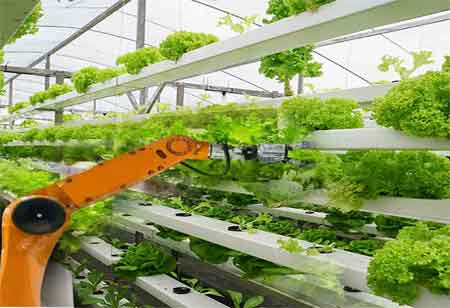Thank you for Subscribing to Agri Business Review Weekly Brief
What Are The Benefits Of Precision Agriculture?
Precision agriculture (PA) is a farming management idea based on observing, measuring and meeting inter- and intra-field variability in crops.

By
Agri Business Review | Thursday, October 27, 2022
Stay ahead of the industry with exclusive feature stories on the top companies, expert insights and the latest news delivered straight to your inbox. Subscribe today.
Precision agriculture utilizes information technology (IT) to guarantee that crops and soil obtain exactly what they require for optimum health and productivity.
FREMONT, CA: Precision agriculture (PA) is a farming management idea based on observing, measuring and meeting inter- and intra-field variability in crops. PA is sometimes mentioned as precision farming, satellite agriculture, as-required farming and site-specific crop management (SSCM).
Precision agriculture utilizes information technology (IT) to guarantee that crops and soil obtain exactly what they require for optimum health and productivity. This also guarantees profitability, sustainability and protection of the environment. It considers soil type, terrain, weather, plant growth, and yield data when managing crops.
How does precision agriculture work?
Precision agriculture depends upon specialized equipment, software and IT services to do its job. This encompasses accessing real-time data regarding the conditions of the crops, soil and ambient air, as well as other relevant information such as hyperlocal weather predictions, labor costs and equipment availability.
The real-time data is gathered through sensors in fields that measure the water content and temperature of the soil and surrounding air. Satellites and robotic drones can also offer farmers real-time images of individual plants.
Advantages of precision agriculture
After data is gathered, predictive analytics software employs the collected data to give farmers guidance about crop rotation, optimal planting times, reaping times and soil management.
Agricultural control centers can incorporate sensor data and imaging input with other data to offer farmers the capacity to identify fields that require treatment and the optimum amount of water, fertilizers and pesticides to apply.
This supports the farmer avoid wasting resources and hindering run-off, ensuring that the soil has just the correct number of additives for optimum health while decreasing costs and controlling the farm's environmental impact.
Use cases for precision agriculture
Previously, precision agriculture was restricted to larger operations that could help the IT infrastructure and other technology resources needed to fully implement and benefit from the advantages of precision agriculture.
Precision agriculture is now feasible for small family farms and farming cooperatives thanks to mobile apps, smart sensors, drones, and cloud computing.
Some of the most famous applications for precision agriculture today enclose:
• Agricultural mapping and field scouting. Drones equipped with cameras can assemble high-resolution maps of fields. This data can determine problem areas, track crops and evaluates yield potential.
• Soil sampling with analysis. Mobile apps can gather data regarding soil type, fertility, moisture content, and more. This data can decide regarding irrigation, fertilization and other features of crop management.
• Weather monitoring. Hyperlocal weather data can aid users in deciding when to plant, how much water to provide crops and when to harvest.
• Labour management. GPS-enabled mobile apps can follow the location and activity of workers in the field. This data can improve workflows and ensure that tasks are completed effectively.
• Equipment management. Agricultural equipment is costly, and precision agriculture can benefit farmers keep track of their equipment, scheduling maintenance, and planning rehabilitation.





